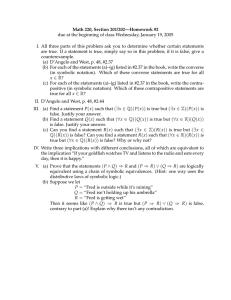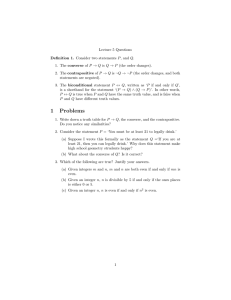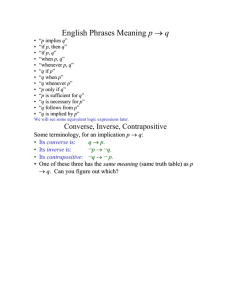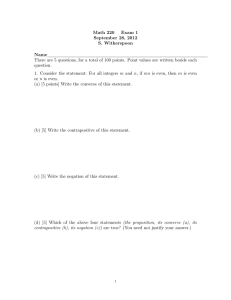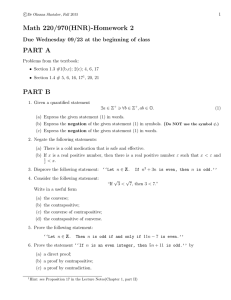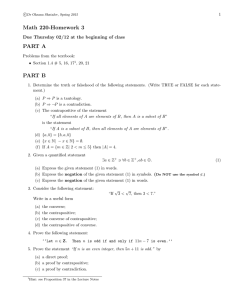Math 220, Section 203—Homework #2
advertisement
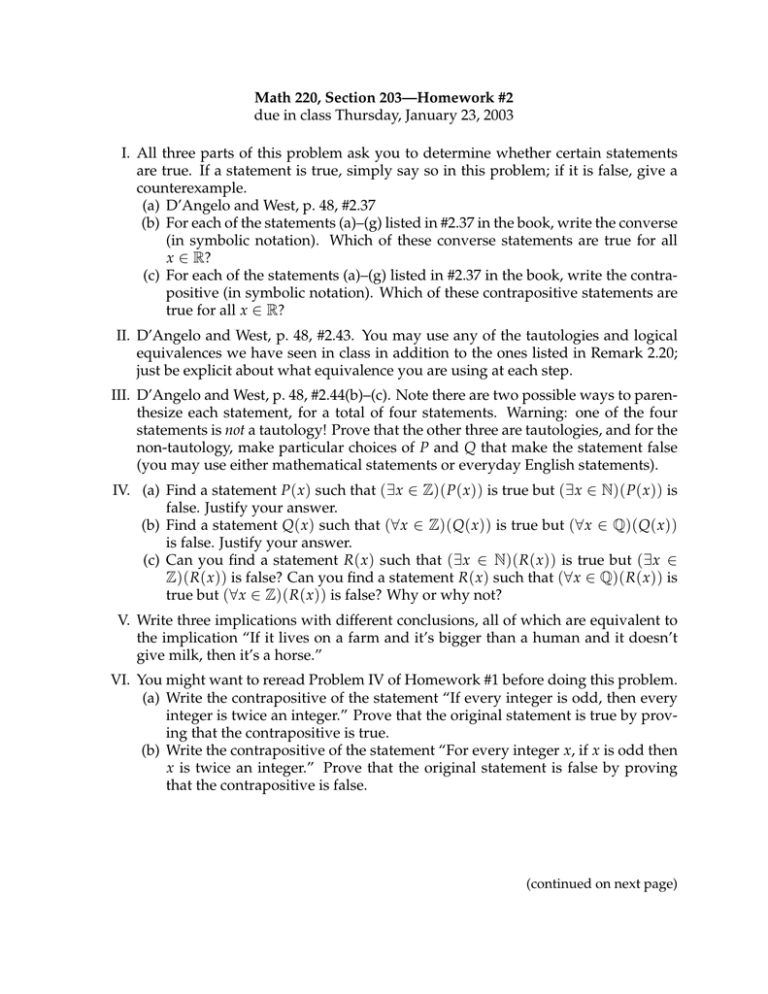
Math 220, Section 203—Homework #2 due in class Thursday, January 23, 2003 I. All three parts of this problem ask you to determine whether certain statements are true. If a statement is true, simply say so in this problem; if it is false, give a counterexample. (a) D’Angelo and West, p. 48, #2.37 (b) For each of the statements (a)–(g) listed in #2.37 in the book, write the converse (in symbolic notation). Which of these converse statements are true for all x ∈ R? (c) For each of the statements (a)–(g) listed in #2.37 in the book, write the contrapositive (in symbolic notation). Which of these contrapositive statements are true for all x ∈ R? II. D’Angelo and West, p. 48, #2.43. You may use any of the tautologies and logical equivalences we have seen in class in addition to the ones listed in Remark 2.20; just be explicit about what equivalence you are using at each step. III. D’Angelo and West, p. 48, #2.44(b)–(c). Note there are two possible ways to parenthesize each statement, for a total of four statements. Warning: one of the four statements is not a tautology! Prove that the other three are tautologies, and for the non-tautology, make particular choices of P and Q that make the statement false (you may use either mathematical statements or everyday English statements). IV. (a) Find a statement P( x) such that (∃ x ∈ Z)( P( x)) is true but (∃ x ∈ N)( P( x)) is false. Justify your answer. (b) Find a statement Q( x) such that (∀ x ∈ Z)( Q( x)) is true but (∀ x ∈ Q)( Q( x)) is false. Justify your answer. (c) Can you find a statement R( x) such that (∃ x ∈ N)( R( x)) is true but (∃ x ∈ Z)( R( x)) is false? Can you find a statement R( x) such that (∀ x ∈ Q)( R( x)) is true but (∀ x ∈ Z)( R( x)) is false? Why or why not? V. Write three implications with different conclusions, all of which are equivalent to the implication “If it lives on a farm and it’s bigger than a human and it doesn’t give milk, then it’s a horse.” VI. You might want to reread Problem IV of Homework #1 before doing this problem. (a) Write the contrapositive of the statement “If every integer is odd, then every integer is twice an integer.” Prove that the original statement is true by proving that the contrapositive is true. (b) Write the contrapositive of the statement “For every integer x, if x is odd then x is twice an integer.” Prove that the original statement is false by proving that the contrapositive is false. (continued on next page) VII. (a) Prove that the statements ( P ∧ Q) ⇒ R and ( P ⇒ R) ∨ ( Q ⇒ R) are logically equivalent using a chain of symbolic equivalences. (Hint: one way uses the distributive laws of symbolic logic.) (b) Suppose we let P = “UBC scores more than 50 points in the game” Q = “SFU scores less than 50 points in the game” R = “UBC defeats SFU in the game” Then it seems like ( P ∧ Q) ⇒ R is true but ( P ⇒ R) ∨ ( Q ⇒ R) is false, contrary to part (a)! Explain why there isn’t any contradiction.
